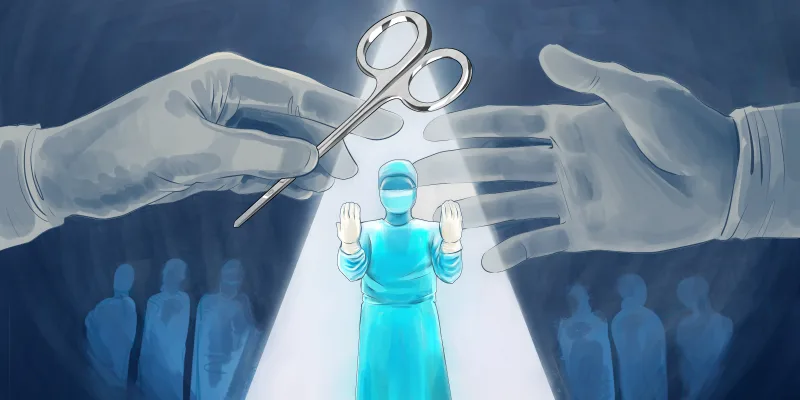I was hoping that the Society of Hematological Oncology (SOHO) annual meeting to be my first major in-person meeting since the COVID pandemic hit, but it wasn’t. This is the second year that the meeting was held virtually due to rising COVID-19 cases. Here is my take on some of the highlights on the management of T cell lymphoma. Mature T-cell lymphoma is a diverse and rare type of non-Hodgkin lymphoma (NHL). It represents around 10% of all NHL but is characterized by a complicated genetic and phenotypic landscape creating many challenges in its therapy. The meeting was disease-focused, with two main venues for presentations, including peer-reviewed abstracts and expert opinions in clinical sessions.
The highlight of the meeting abstracts was the oral presentation of the ECHELON-2 study, and the original study was published in 2019. The study was a randomized phase III including patients with mature T-cell lymphoma where the patients were randomized to CHOP or A+CHP. The updated presentation confirmed the findings of the original publication. The hazard ratio (HR) to progression (PFS), death, or recipes of subsequent therapy was in favor of the experimental arm at 0.70 ( 95% CI: 0.53-0.91). There was a preferential reduction in HR of 0.55 (95%CI: 0.29-0.79) in the anaplastic T-cell lymphoma prespecified subset analysis. The median overall survival (OS) was improved too in the A+CHP arm with an HR of 0.72 (95%CI: 0.53-0.99). The report of Brentuximab Vedotin (BV) retreatment following A+CHP was interesting, performed in 29 patients (12.8%). Patients received the BV retreatment after a median of 15 months (range 3-64). The overall response (ORR) was 59%, with a complete response (CR) of 38%. The response was consistent in all subgroups. The study proved the persistent efficacy of BV in CD30 +ve mature T cell lymphoma in a retreatment setting. This is an important finding in a group of patients with limited available options.
Some of the criticism to ECHELON-2 study has been the effect seen in a smaller subgroup of angioimmunoblastic T cell lymphoma (AITL) as well as the use of CD30 cutoff expression of 10%. The MDACC hematology group presented the effect of CD30 expression in AITL. Their study did not show a significant difference in PFS and OS between the CD30 +ve (N=97) and CD30-ve (N=32) patients. Only 20% of patients with CD30 expression were treated with BV-based therapy, which might explain the lack of benefit in the outcome.
Mogamulizumab, a humanized, defucosylated anti-CCR4 antibody, is currently approved for the treatment of relapsed/refractory mycosis fungiodes (MF) and Sezary syndrome (SS) based on the MAVORIC study. Dr. Francine Foss and colleagues (Poster # TCL-194) studied the effect of lymphocyte shift seen in the MAVORIC study in a post hoc analysis.
They showed a shift in lymphocyte counts was associated with a better response to mogamulizumab. They showed that the shift was most pronounced in patients with SS and MF B2 (58% and 69%, respectively). There was a lack of evidence of increased risk of infection with the severity of lymphopenia.
Another analysis of the MAVORIC trial from Dr. Zinzani and colleagues showed significant improvement in quality of life as measured by FACT-G, Skindex-29, and ItchyQOL in patients with blood involvement on the mogamulizumab arm in comparison to those who do not have blood involvement or patients on the vorinostat arm irrespective of blood involvement. This highlights the effects of mogamulizumab on the blood compartment of MF and SS.
Dr. Ryan Wilcox from the University of Michigan presented his vision of the novel agents to be considered in mature T cell lymphoma. The “Three-signal model” is very intriguing to look into ways to improve outcomes in a challenging and rare cancer. The first model involves inhibition of the T cell receptors (TCR), which are retained in the majority of T cell lymphoma. TCR engagement enhances a T cell's growth and survival. TCR signaling has been found to enhance interleukin-2-inducible T cell Kinase (ITK) activity and chemotherapy resistance. He presented the potential role of CPI-818, a first-in-class, selective ITK inhibitor that has been shown to block ITK with responses observed in peripheral T cell lymphoma (PTCL) and cutaneous T cell lymphoma (CTCL). Dr. Wilcox touched on the responses seen with the second signaling pathway of phosphoinositol-3-kinase (PI3K) inhibitors. Of those, duvelisib has significant activity in PTCL and CTCL with ORR of 40% and CR of 30%. The PRIMO study is still ongoing. The third signaling pathway that has promising activity in treating T cell lymphoma includes the JAK/STAT pathway inhibition. Ruxolitinib showed responses in patients with pSTAT3 expression and JAK/STAT mutations compared to those who did not. Cerdulatinib also showed responses, but biomarkers of response are still ongoing.
Dr. Pinter-Brown from the University of California-Irvine presented her take on the proper way to look at the treatment of advanced CTCL. Her approach of “compartmentalization” of the disease is very intriguing and helps better identify the appropriate agent for the right compartment and stage of the disease. She defined the level of involvement of MF/SS into the body as epidermal skin, dermal skin, blood, lymph nodes, and viscera. To support the unique genetic signature seen in CTCL patients, depending on their growth compartment, a newly published paper showed that transcriptional and genetic level differences between skin-derived and blood-derived malignant T cells. This compartmentalization was evidence of mogamulizumab's excellent response in the skin and blood compartment with little effect in the lymph nodes and visceral organs. Brentuximab vedotin showed activity in multiple compartments. However, its efficacy is limited to patients with CD30 positivity in the ALCANZA trial. Other agents discussed include Vorinostat, Romidepsin, Bexarotene, and Doxil.
SOHO continues to provide important updates on the progress made in hematological malignancy. It serves as an easy to navigate conference with strong emphasis on published updates rather than brand new data.
Dr. Saeed is employed by Moffitt Cancer Center. They have received grants from SecuraBio and BMS, and consulting fees from SecuraBio, BMS, SeaGen, Karyopharm, Epizyme, and Morphsys.
Image: Alpha Tauri 3D Graphics / shutterstock







